Pools can be a lot of fun, but they can also present a lot of hazards. Make sure pools have the proper safety features in place to help reduce the risk of injury.
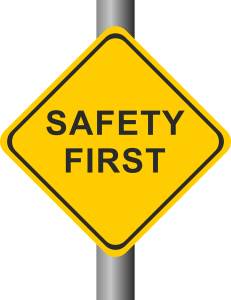
Prevent access to the water when the pool is not in use.
- Install and maintain barriers such as four-sided fencing.
- Use locks/alarms for windows and doors.
- Remove all toys from the pool area that might attract children to the pool when not in use with adult supervision.
Ensure swimmers know the pool depth.
Depth markers can help children and parents know where it's safest to swim. Depth markers can also prevent diving injury. No diving in water less than 5 feet!
Swim where a lifeguard is on duty.
If a lifeguard is not available, be familiar with lifesaving equipment and how to use it. Know the address of where you are in case you need to call 911.
Stay away from pool chemicals and pool chemical rooms.
While many pool chemicals help keep us safe when in the water, they can cause harm if used improperly.
Click on the buttons below to learn about specific pool safety features:
All pools should have barriers to prevent unexpected or accidental entry into the pool area. Barriers include fences, walls, door alarms for the house, and power safety covers over the pool.
Pool fences should:
- Completely surround the pool
- Be at least 4 feet high
- Be constructed so that a child cannot get over, under, or through the fence
- Ensure that no permanent structures, equipment, or other objects can be used to climb the fence
Pool fence gates should:
- Have a self-closing and self-latching device that is out of reach of children
- Open outward, away from the pool

Ideally, the house will not serve as the fourth side of the pool barrier. However, if it does, make sure to install door alarms on any doors that can lead into the pool area. This will prevent children from accessing the pool unnoticed.
Pool covers add an extra layer of safety by ensuring that a child who gains access to the pool unnoticed will not fall into the water.
For above ground pools, ensure that the ladder or stairs into the pool deck are secured, locked, or removed to prevent access to the water. Portable pools, including inflatable and more permanent models, should be fenced, securely covered, or emptied and put away between each use.
For more detailed information, see the Consumer Product Safety Commission’s Safety Barrier Guidelines for Pools.
Signs or markers should be big enough to be easily seen and maintained so they are readable.
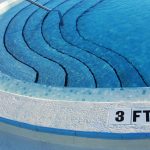
Depth markers should be provided so swimmers know how deep the water is.
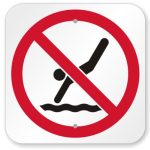
NO DIVING signs or markers should be located in pool areas with less than 5 feet. No diving in water less than 5 feet deep.
Figure 4.5.19.4.1.1 of the MACH Annex
Call 911 in the event of an emergency. Know where you are and the address to give to emergency responders.
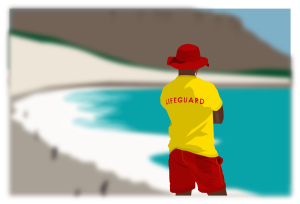
Whenever possible, swim where a qualified lifeguard is present. Know where lifeguards are and follow their instructions
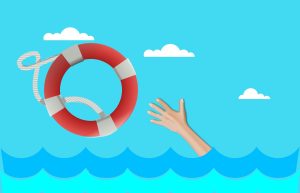
Pools may have a throwable floatation device, or life ring or buoy, while some might have a rescue tube. Some pools may have a reaching pole, or shepherd’s crook. Be familiar with where these items are and how to use them. Do not enter the water to save someone unless you have been properly trained and certified. Before swimming, learn lifesaving skills.
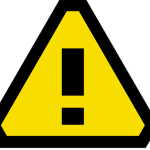
Pools require chemicals to keep the water clean. Some chemicals are dangerous if not handled correctly. Pools should ensure chemicals are properly labeled and kept behind locked doors. Chemicals should never be added to the pool while swimmers are in the water.
Visit the VDH Pool Chemical Safety page to learn more!
Pool chlorine levels should be checked daily. Public pools are required to post chlorine levels on a sign at the pool for everyone to see. Safe chlorine levels range from 1.0ppm to 3.0ppm. Check with the pool owner or operator if you have questions about chlorine levels.
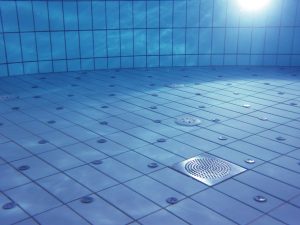 The Virginia Graeme Baker Pool and Spa Safety Act (15 U.S.C. § 8001 et seq.), requires that proper pool drain covers and secondary anti-entrapment systems be installed to prevent serious injury or death of pool and spa users. This is important for safety and is required by federal law.
The Virginia Graeme Baker Pool and Spa Safety Act (15 U.S.C. § 8001 et seq.), requires that proper pool drain covers and secondary anti-entrapment systems be installed to prevent serious injury or death of pool and spa users. This is important for safety and is required by federal law.
The U.S. Consumer Product Safety Commission (CPSC) reminds all public pool owners and operators of the importance of water and drain safety.
CLICK HERE to access the CPSC letter. This letter includes educational materials with images and instructions to assist with conducting safety inspections. Additional pool-related safety resources can be found on the Pool Safely website: https://www.poolsafely.gov. Pool Safely is a national public education campaign focused on reducing childhood drownings, submersion injuries, and entrapments.
